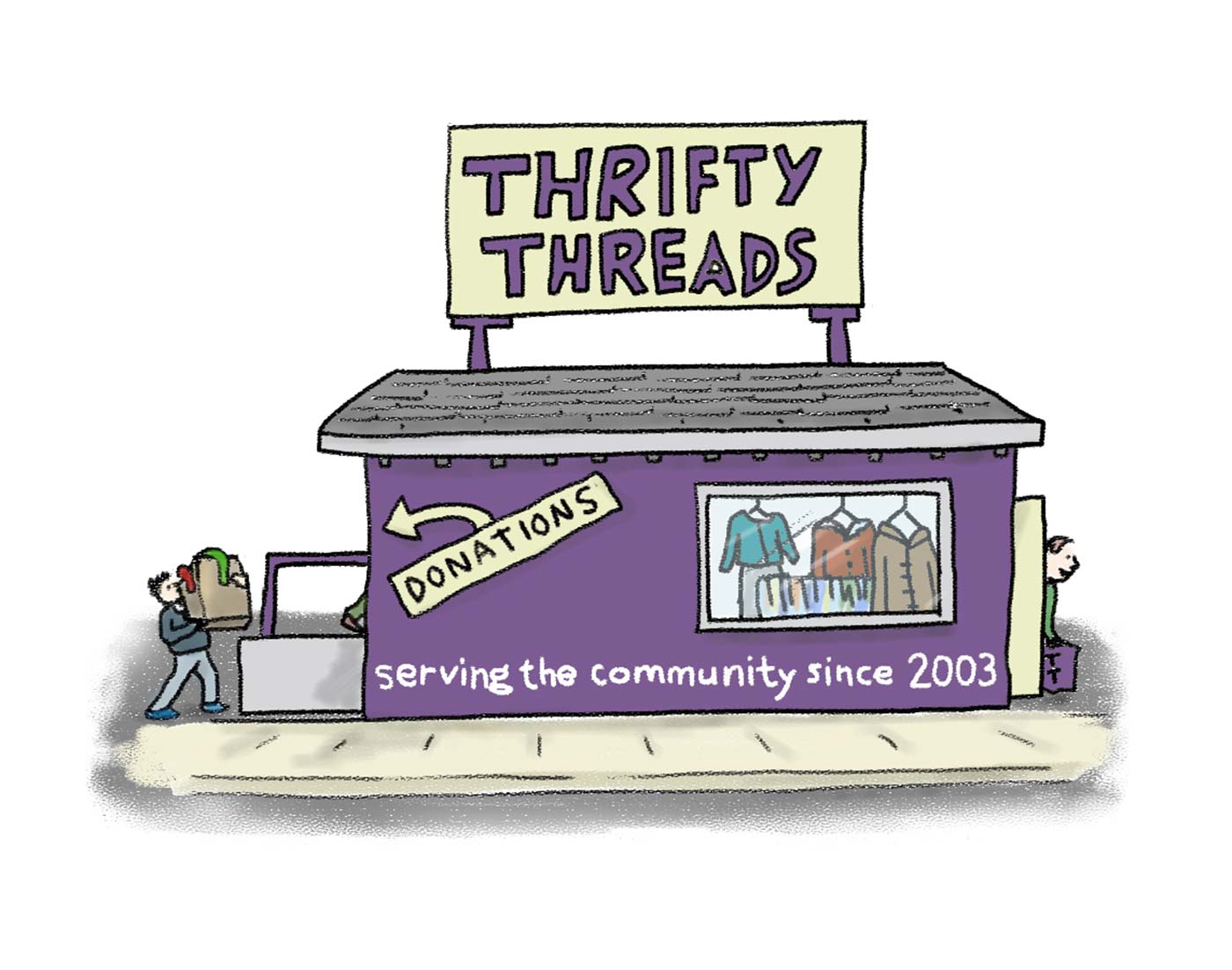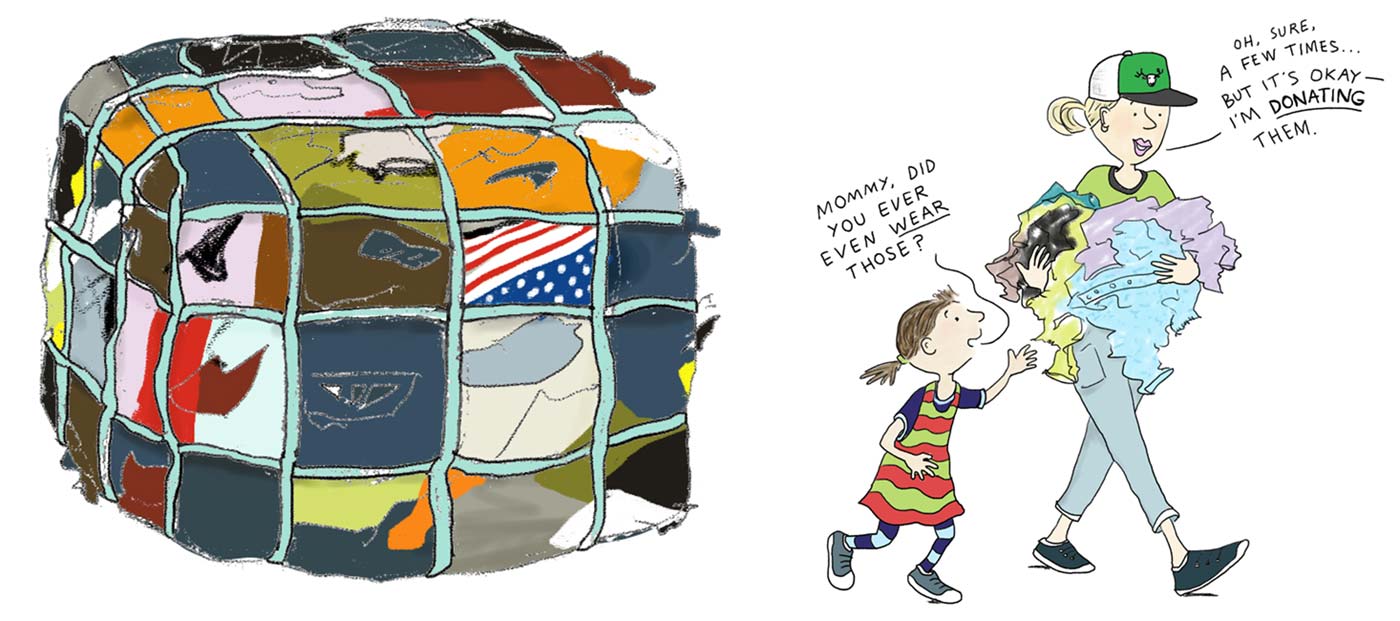Take a peek in your closet and what will you find? Did you know that modern “fast fashion”—fast changes, fast production, fast purchase, and fast wearing—has significant environmental consequences? A lot of clothing these days isn’t made to last, and many garments are worn just a handful of times before they are passed off to the local thrift. Donating used clothing can feel good, but what really happens to items that are casually bought but quickly cast off ?


Clothing that doesn’t sell quickly in the thrift store may eventually end up in a salvage market and then as part of a tightly packed bale of clothing overseas, where traders bid on the bales sight unseen. While garment workers are good at tailoring, coloring, and repurposing used clothing, this is only possible if the fabric is of decent quality. Items made of low-grade synthetic fabric often end up as garbage in a landfill, on the beach, and in the ocean.
What can you do? Wear your clothing! And buy garments made of durable, sustainable materials. Merino wool is one example of a sustainable fabric that lends itself well to repurposing, and it’s not just for itchy sweaters anymore. There are many brands that use sustainable fibers, such as Bozeman-based clothing company Beringia. This company’s products are made of regenerative wool from Japan’s Bishu artisans, whose practices are in line with a Buddhist philosophy of zero waste.

